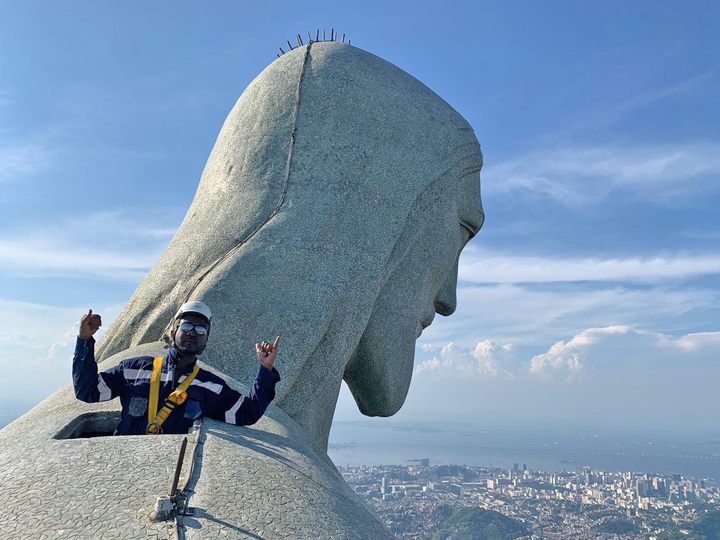
It’s Hard Work to Restore Rio’s Christ the Redeemer, but the Views Are Amazing
The work is for the 90th anniversary in 2021, but the real party is still a decade away.
Lately, from the ground far below, Rio’s famed Christ the Redeemer statue appears to be cupping tiny people in its mighty hand. It’s no miracle, unless you consider the restoration of the iconic monument more than 2,000 feet above the city a miracle. And it kind of is.
As a boy growing up in Niteroi, Rio de Janeiro’s sister city, on the opposite side of Guanabara Bay, Alexsandro Brauna looked out over the water and gawked at the statue, on its perch atop Corcovado mountain, arms spread to embrace all the beauty and brutality playing out below. In 2021, the 27-year-old Brauna has been one of the tiny people in its hand. He rappels down the 100-foot statue, straddles one of those famously outstretched arms to pose for photos, and takes in a Christ’s eye view of the extraordinary cityscape below.
The world’s largest Art Deco monument and one of the New Seven Wonders of the World is getting a tip-to-toe restoration ahead of its 90th birthday in October 2021.
An alpinista industrial (rope access technician) tasked with managing the safety equipment for the restoration team, Brauna’s privileged viewpoint offers the whole city—but also a look at the tiniest details: the triangular tiles that give the statue a scaly mosaic appearance up close, the lightning-conducting spikes along its arms and head, the subtle outline of a heart on its chest.

“This work feels just totally outside the realms of normal life,” he says. “Brazilians call Rio the Cidade Maravilhosa [Marvelous City], but it’s only when you get up this high that you can appreciate just how incredible it really is. And getting up close like this, we can see all the skill involved [in the statue].”
It’s a view that eluded even the statue’s creator, French-Polish sculptor Paul Landowski. “My grandfather never saw the finished statue with his own eyes,” says his granddaughter, Elisabeth Caillet, “and it was a matter of deep regret to him. He was worried that it would not be a success, that the monumental size would be too much.”
In 1931, when the statue went up, the round trip from France took months, and Landowski was committed to other projects, such as the Saint Geneviève statue in Paris and the mausoleum of Sun Yat Sen in Nanjing, China. So he couldn’t stay to its completion.
It was with some trepidation, then, that Caillet herself visited the sculpture several years ago. “I had great fears because my grandfather had always had those doubts about how it would work on the site,” she says, “but I was happily surprised by the beauty of the work. What was very moving for me was that I approached the statue from the back, and so its beauty was revealed gradually, and as I drew closer I felt absorbed by the monument towering above me.”

From any angle, the Christ statue is an arresting vision. But keeping it in top form requires a great deal of work.
At the top of the highest of Rio de Janeiro’s many rocky peaks, and surrounded by the dense Atlantic rain forest that makes up Tijuca National Park, the monument is unusually exposed, at the mercy of the elements, and buffeted by violent tropical storms.
According to Brazil’s National Institute for Space Research (INPE), Christ the Redeemer is hit by lightning up to five times per year, and the storms are growing in ferocity. In 2014, the statue lost a finger in a particularly dramatic strike, and required emergency restoration work, carried out even as the crowds continued to snap photos at his feet.

Brauna, an Industrial Rope Access Trade Association climber and former member of the Brazilian Marine Corps, is tasked with ensuring the ropes are securely fixed and that all safety procedures are in place for the other gravity-defying workers. “We still have a lot of work ahead of us, and a lot of it depends on the climate,” he says. “When the weather is bad we can’t work, it’s not safe.”
Part of the current major restoration involves repairing past storm damage and ensuring that the statue, made of reinforced concrete covered in triangular soapstone tiles, is in good shape to withstand future lightning strikes and other meteorological events, as well as the everyday ravages of time. Brauna’s day-to-day work on the project also includes fitting additional lightning rods, replacing cracked or damaged tiles, and applying water-repellant solutions to the pedestal.
Advances in technology have helped with the restoration process. The initial stages of the project involved 3D scans of the statue’s interior, and lab tests at the Federal University of Ouro Preto to determine the condition of the soapstone and reinforced concrete, and to assess corrosion levels.

According to Osmar Pinto, coordinator of the Atmospheric Electricity Group at the INPE, “The storms are not only becoming increasingly violent as a result of urbanization and global warming, but they are also becoming more frequent: The city of Rio saw a 21 percent increase in the number of storms over the last century.”
Although he couldn’t have foreseen climate change, Landowski was well aware of the challenging conditions into which his design was placed, and he crafted his masterwork with both longevity and beauty in mind.
British writer Donna Bowater was reporting in Brazil when Christ the Redeemer lost the tip of its finger to lightning and had a rare chance to see the statue from inside while covering the story for the BBC.
“It was really surreal,” she says. “I’d been up to the base several times before as a tourist and with visitors, but going inside was a bit unnerving because it is crypt-like, with about a dozen flights of stairs zig-zagging to the top. Each level is numbered and almost at the top, there’s a heart on the inside that matches the heart in the middle of Cristo’s chest on the outside. At the top, the tunnel into the arm is low and only accessible by crawling along it. At two intervals, there are trapdoors where it’s possible to stand.”

That’s the route that the restoration workers take to the statue’s upper reaches today. It makes for quite a workplace.
The idea for a large-scale religious monument “keeping watch” over the city came from a 1920s Catholic concern that a certain “godlessness” was creeping into Rio society. An original draft was drawn up by civil engineer Heitor da Silva Costa in collaboration with Brazilian artist Carlos Oswald, and featured a Christ holding a globe in one hand and a cross in the other. But the idea was widely mocked, with locals dubbing the design “Christ With a Balloon.”
That the task of building the statue fell to a Frenchman reflects the artistic ideology of the time, says Márcio Roiter, founder and president of the Brazilian Art Deco Institute and coauthor of Secret Rio. “There was, at the time, a mentality that everything that came from France would be better, better finished, superior.”
Silva Costa traveled to France, and after discussions with accomplished sculptors Antoine Bourdelle and Landowski, he commissioned the latter. Landowski’s vision of an Art Deco Christ with open arms appealed to the church. “Landowski practiced a modern sculpture,” Roiter says, “but without major ‘avant-garde raptures,’ which pleased the ecclesiastical authorities.”
Caillet, who holds warm memories of her grandfather working on the project at his atelier in Boulogne, France, says that one of the sculptor’s greatest concerns was that because the statue would be visible for miles around, it needed to work well from a distance as well as in close-up. To achieve this, she says, he altered the statue’s garments in each successive draft of his plans. “When we look at the evolution of the scale models he made of the statue, we see that he made it simpler and simpler.”
But those simple, clean and elegant lines hide some surprising details. “The most interesting thing seems to me to be the choice made by Silva Costa to make the concrete statue by covering it with soapstone,” says Caillet. “This stone was cut into small triangles, which were fixed, sewn, on strips of fabric and then applied to the statue. It is said that all the women of Rio participated in this sewing project.”
In Brazil, the story holds that when cutting and attaching the tiles, the women wrote the names of their sweethearts on the back, along with other messages, carving their stories into history.
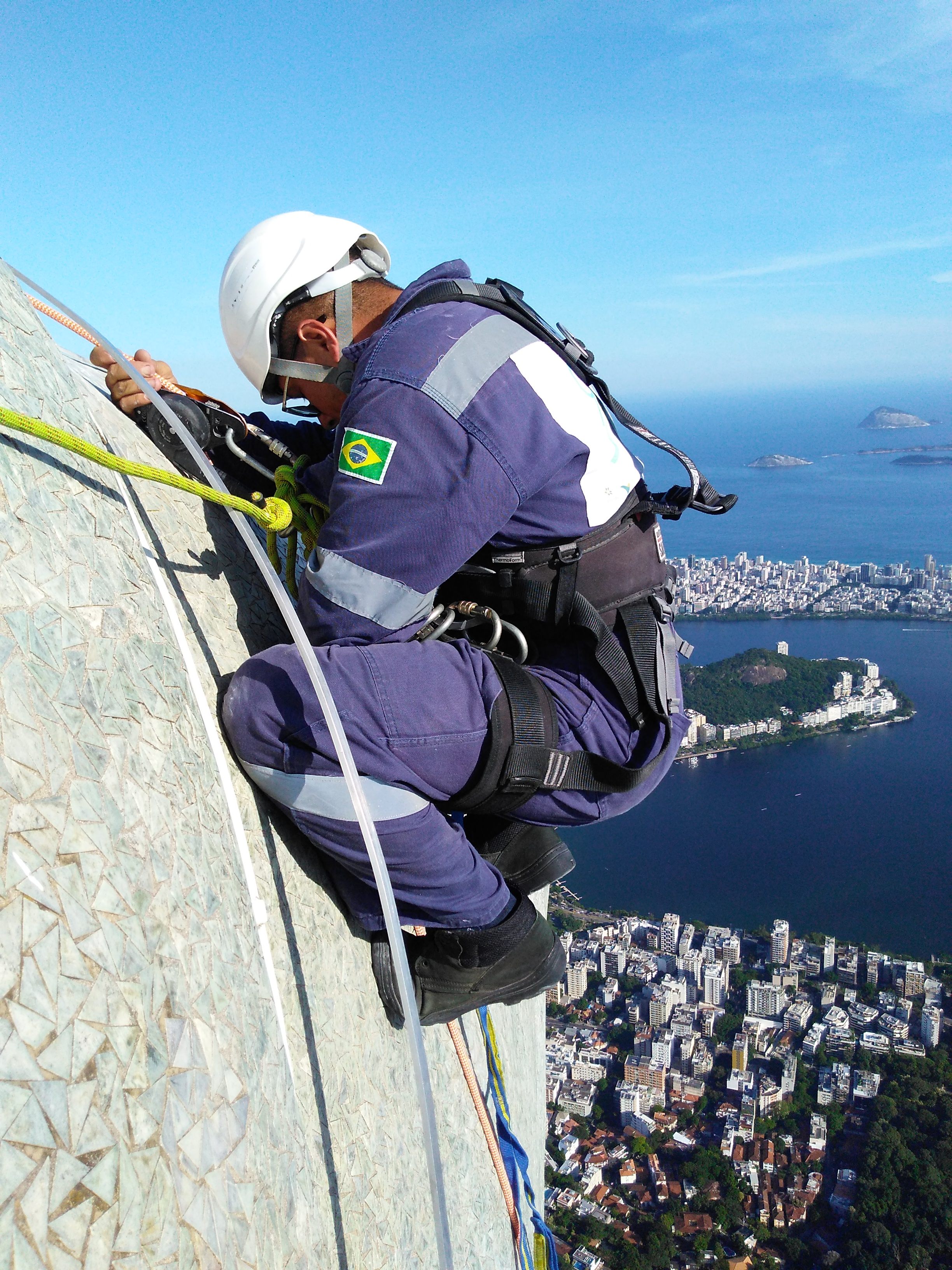
The sight of such an enormous statue—the head alone is 12 feet tall and weighs 30 tons, the span of those outstretched arms is 92 feet—standing atop the natural pedestal of Corcovado begs the question of how it got there in the first place.
This is often hotly debated even among locals. Some Cariocas (natives of Rio) hold that Landowski crafted the whole thing in France and had it shipped over, while others are adamant that only the head and hands were crafted in France, and the rest was built in situ.
Landowski’s granddaughter has the definitive answer: “My grandfather carved the head and hands of the statue in his studio in Boulogne. He even had to find another workshop because his own atelier was too small to contain them.”
Caillet’s daughter, Chloé Beauvellet, explains that her great-grandfather had wanted to carve the whole monument in full in France, but it was a logistical impossibility. Instead, he created a 12-foot scale model of the body, which was enlarged on site. The enormous head and hands were shipped to Brazil.
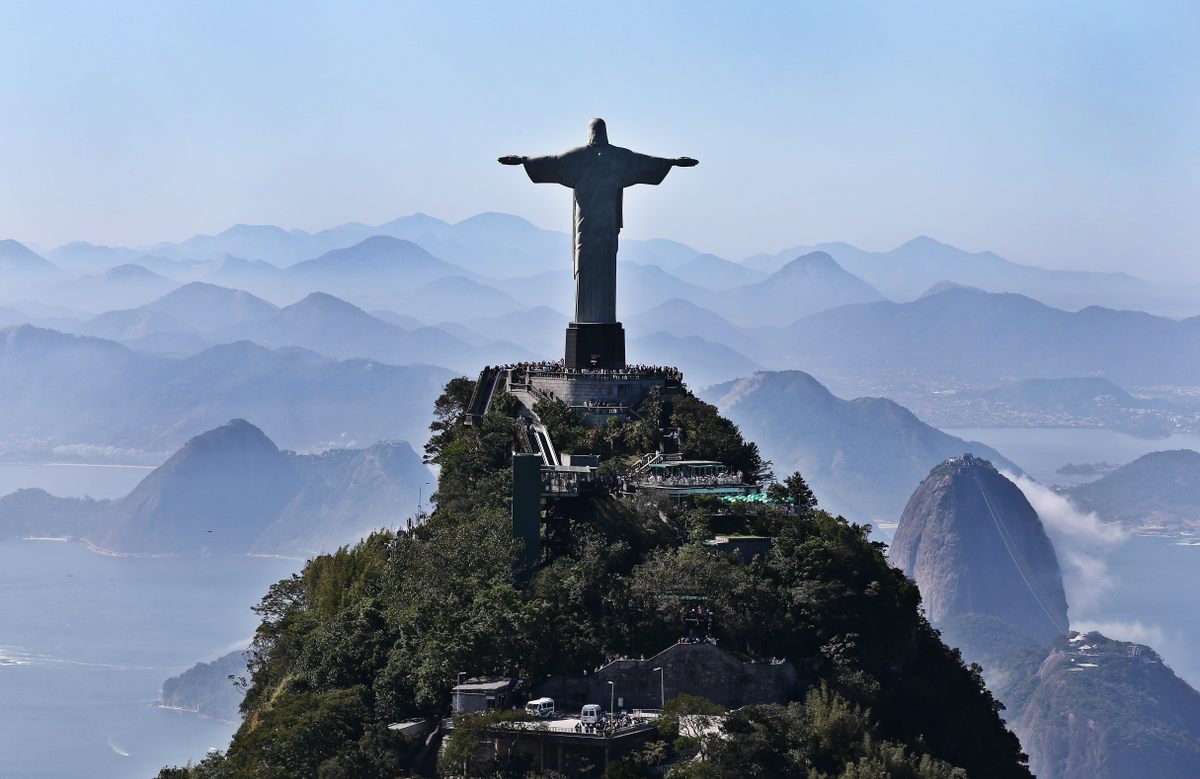
“My mother would visit the studio when he was making the head and the hands, and vividly recalls the damp smell of the clay,” she says. “She told me that when she visited the statue, that vivid sensory memory of the smell of the clay in the workshop came rushing back.”
Most visitors to the statue arrive by tourist van or the cog railway that climbs the steep, jungle-covered sides of Corcovado, but a new pilgrimage route will soon allow visitors to trek on foot through the forest to the foot of the Christ. Set to be initiated as part of the 90th-anniversary celebrations, this new Via Sacra will run through Tijuca Forest, the largest swathe of urban jungle on the planet at more than 15 square miles.
Inspired by other “holy roads,” such as those in Rome and Jerusalem, the planned pilgrimage trail is a collaboration between the Archdiocese of Rio and Brazil’s Institute of National Historical and Artistic Heritage (IPHAN). Olav Schrader, superintendent of IPHAN, says that, although the plans have been slightly delayed due to the pandemic, it should be finalized “just in time for it to be still a part of the Christ statue’s 90th birthday celebrations.”

Planned as an ecofriendly project that will bring historic trails back into use, the exact route and length of the trail are still under discussion.
An often-cited quote from bossa nova legend Tom Jobim holds that “Brazil is not for beginners,” and these steep paths through the sticky tropical jungle will require sturdy boots and a certain level of fitness. But those taking on the challenge will find themselves in the company of chattering marmosets, brightly colored butterflies, and perhaps, if they’re lucky, one of the jungle’s resident toucans. The forest is also filled with natural pools, streams, and waterfalls.
“One thing all the possible routes have in common is that they are all literally uphill trails. We have to think carefully about the physical challenge of walking them, the distance to the peak of the mountain, and the diversity of nature and sights each possible path has to offer,” Schrader says. “This is no stroll through the mall.
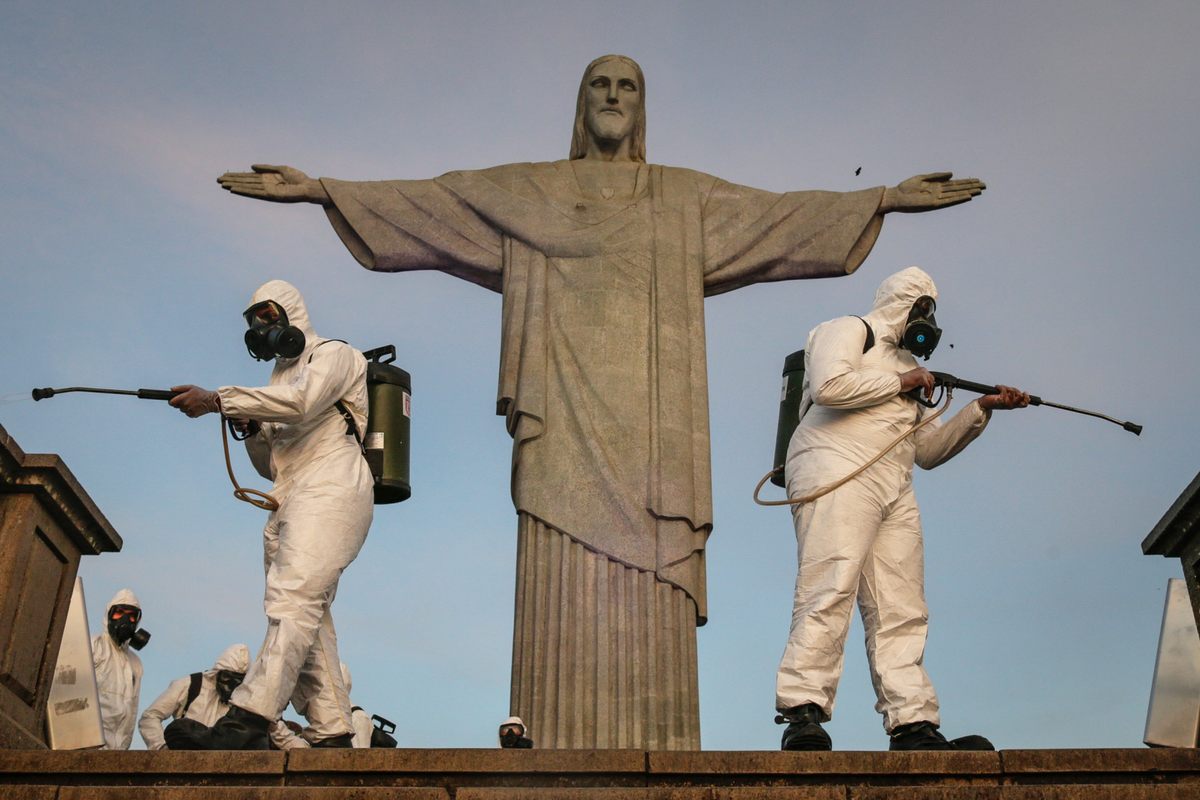
Schrader laments that the pandemic has impacted on the timetable for creating the new route and preparing for the landmark anniversary. But insists that the new Via Sacra will be ready “just in time.”
Those celebrations will run from October 9 to 17, 2021, and involve a series of “religious, social and cultural activities” across the city. But pandemic restrictions mean that it will likely be, by Rio’s world-renowned standards, a somewhat subdued affair.
The climber Brauna believes that the real party will come in another 10 years, with the centenary. “The 100th anniversary will be huge, and the celebrations will be more intense, much more grandiose, than those taking place in this pandemic year,” he says. “It will be something magnificent. I hope I’ll have a hands-on role again.”



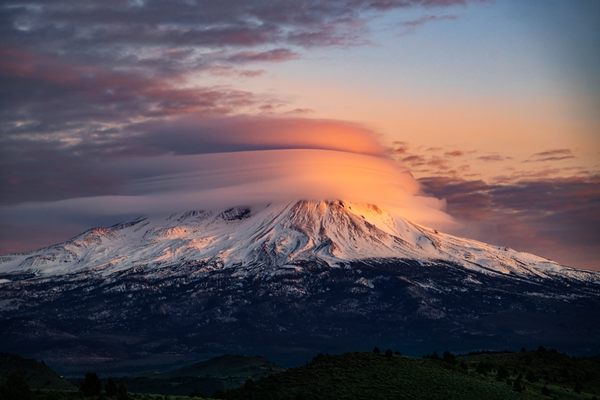
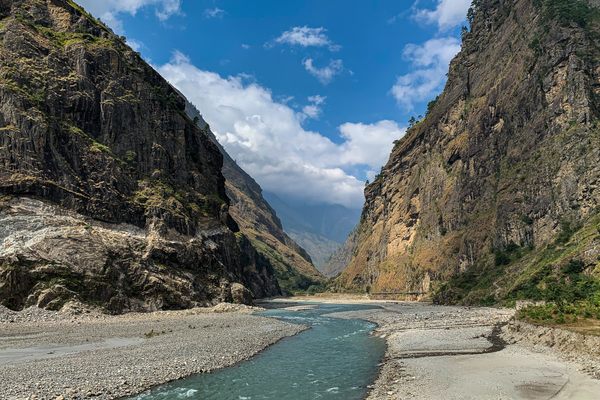
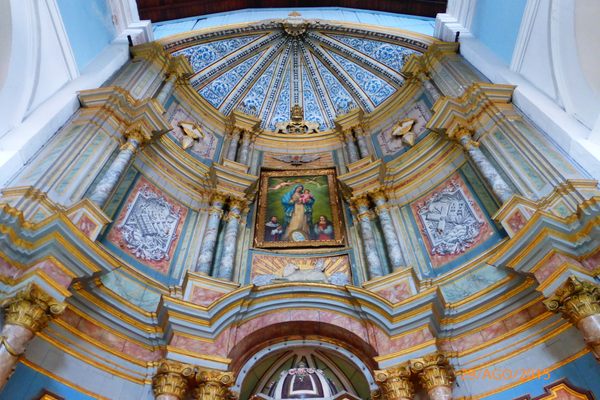


















Follow us on Twitter to get the latest on the world's hidden wonders.
Like us on Facebook to get the latest on the world's hidden wonders.
Follow us on Twitter Like us on Facebook